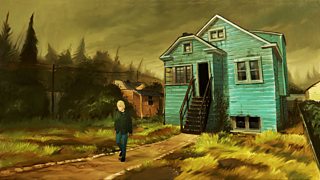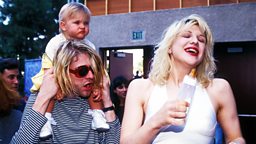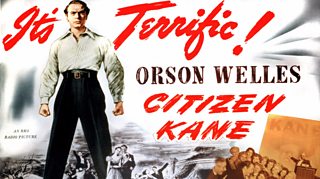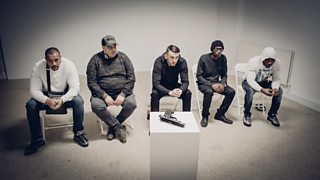Cobain: The myth enhanced and attacked
10 April 2015
Montage of Heck was the title of a cassette compilation made by Kurt Cobain. It’s now also the title of an HBO documentary on the late Nirvana frontman. Deemed the official version by his widow, the reportedly hands-off Courtney Love, it’s directed by Brett Morgen, who was behind the acclaimed Robert Evans biodoc The Kid Stays in the Picture.
Given unfettered access to Cobain’s archive of tapes, films and diaries, Morgen had to tell the musician’s sometimes contradictory story with the help of those who knew him, although Nirvana band mate Dave Grohl does not appear in the film. ALASTAIR McKAY meets Morgen and considers where the film leaves Cobain’s reputation.


Twenty-one years after his death, there are many ways to view Kurt Cobain. You could call him an icon, and it’s a term that Brett Morgen, director of Kurt Cobain: Montage of Heck is happy with, even if his film seems designed to simultaneously enhance and attack the myth.
“He’s a great icon for young people,” Morgen says. “Kurt was able to articulate those feelings of abandonment and disillusionment and angst as successfully as almost any artist. He provides comfort to the disenfranchised, the uglies, the geeks, the rejects.”

There are extraordinary glimpses into his childhood, with footage showing the young Kurt, apparently happy, at birthdays and Christmases. Even in these moments, there is a sense of dread
That said, comfort is in short supply in Montage of Heck. As a piece of filmmaking it is extraordinary, being based on Cobain’s journals and sound recordings.
His scratchy jottings are animated, there are audio experiments, unheard music, fragments of spoken word - all of them framing Cobain in the pained disillusionment of his teenage years.
Kurt tells a disturbing story - it’s not clear whether it’s true - about his attempt to lose his virginity. There is talk of an attempted suicide on the railroad tracks near his home in Aberdeen, Washington.
There are extraordinary glimpses into his childhood, with footage showing the young Kurt, apparently happy, at birthdays and Christmases. Even in these moments, there is a sense of dread. Where, you wonder, did it all go wrong?
Morgen’s documentary suggests answers, though the filmmaker is perhaps too canny to spell them out. “I was interested in Kurt’s interior journey.
All artists are producing autobiography whether they want to or not, and with Kurt you have an artist who worked both visually and aurally, so he provided me with one of the most complete aural and visual biographies of anyone from my generation.
In a sense, if he was Bob Smith I would be equally as intrigued by the material. It just happens that he’s Kurt Cobain.”
It’s not all sound montages and doodles in the margins. Morgen also has interviews with Cobain’s intimates - his mother Wendy (whose resemblance to Courtney Love is quite unsettling), his sister Kim, his father Don, stepmother Jenny, and Kurt’s ex-girlfriend Tracy Marander.
Wendy talks about Cobain’s “genius brain” which was “constantly going”, leading to a childhood prescription for Ritalin. He was, she says, “hyper, fulla energy”.
Nirvana band-mate Krist Novoselic also comments on Kurt’s busy-ness - “he never had idle hands” - while looking pained and uncomfortable throughout his interview.
Kurt’s parents divorced when he was nine; he became unruly, was shifted between various relatives, found solace in pot-smoking and - to make a messy story neat - was saved by punk rock.


What's in a band name?

A clip from Montage of Heck featuring animations of Cobain's notebook scribblings on possible band names.


And then there is Courtney Love, Cobain’s wife, and a controversial figure in Nirvana lore.

I know that Wendy and Krist would feel better if some of that stuff wasn’t in the film, but to me that would be reinforcing a myth that is dangerousBrett Morgan
“I chose to present Courtney from Kurt’s perspective,” says Morgen, “because to understand the betrayal and why that would impact the way it did you had to understand his love for her, that they have for each other, and how deeply invested he was in that relationship.”
The “betrayal” is an incident, before one of Cobain’s overdoses, where he believed that Courtney had been unfaithful, though Love’s recollection of the event presents her own actions in a kinder light.
“What she tells us is that Kurt thought she cheated on him,” Morgen says. “The question of whether it really happened is neither here nor there.
Perhaps it happened and she didn’t want to admit that on camera. Perhaps Kurt just was psychic. What is clear is that he perceived there to be a betrayal. The film hopefully reveals why that would impact in the way it does.”
The film is structured to suggest that Cobain - because of his parents’ divorce, and perhaps due to his own mental chemistry - hated being humiliated. “The rage would descend,” notes Novoselic.
But the home video footage from his time with Love, when he retreated to become a father (to Frances Bean, who executive-produced the film) and live in what appears to be junkie squalor, suggests more complicated reasons for his mental instability.
The numbing of Cobain’s spirit is hard to watch, particularly during a sequence where a smacked-out Kurt attempts to give his baby daughter her first haircut.
“I know that Wendy and Krist would feel better if some of that stuff wasn’t in the film,” says Morgen, “but to me that would be reinforcing a myth that is dangerous - the idea of, ‘Yeah, we know he did heroin, but we don’t need to see what it looked like, because that’s too hard to look at.'
“When I first spoke to Krist and Wendy about that material, I said ‘I concur - we can all agree it’s horrible.’ The question is: is it relevant? I think it’s absolutely relevant - particularly the haircut scene where it’s not about Kurt being a junkie, it’s about the struggle between Kurt being a father and this love he has for his child and his inability to nurture the child the way he wants to because of his addiction. It’s very complicated.”
It also suggests one of the contradictions in the commercial deification of Cobain, which has turned a mixed-up kid into the patron saint of disaffection. But Morgen - still looking dazed from his time inside the storage container of Kurt’s personal effects - disagrees. “He had a light - he was not normal.”
Kurt Cobain: Montage of Heck is on general UK release from 10 April 2015.




Montage of Heck: Cobain's Mixtape
Kurt Cobain assembled a mixtape, “Montage of Heck”, around 1988 using a 4-track cassette recorder. It features songs from his extensive record collection, manipulated radio recordings, elements of Nirvana demos and other sounds created or recorded by Cobain.
Tracklist taken from here.
“The Men In My Little Girl’s Life” by Mike Douglas
“The Sounds of Silence” by Simon & Garfunkel
“Being for the Benefit of Mr. Kite!” by The Beatles
“A Day In The Life” by The Beatles
“Eruption” by Van Halen
“Hot Pants” by James Brown
“Gypsies, Tramps and Thieves” by Cher
“Go Away Little Girl” by Donny Osmond
“Rocky Mountain High” by John Denver
“Everybody Loves Somebody” by Dean Martin
“The Candy Man” by Sammy Davis, Jr.
“In A Gadda Da Vida” by Iron Butterfly“Wild Thing” by William Shatner
“Taxman” by The Beatles
“I Think I Love You” by The Partridge Family
“Are You a Boy or Are You a Girl?” by The Barbarians
“Queen Of The Reich” by Queensryche
“Last Caress/Green Hell” covered by Metallica
“Whole Lotta Love” by Led Zeppelin
“Get Down, Make Love” by Queen
“ABC” by The Jackson Five
“I Want Your Sex” by George Michael
“Run to the Hills” by Iron Maiden
“Eye Of The Chicken” by Butthole Surfers
“Dance of the Cobra” by Butthole Surfers
“The Shah Sleeps in Lee Harvey’s Grave” by Butthole Surfers
“New Age” by The Velvet Underground
“Love Buzz” by Shocking Blue
Orchestral music from 200 Motels by Frank Zappa
“Help I’m A Rock” / “It Can’t Happen Here” by Frank Zappa
“Call Any Vegetable” by Frank Zappa
“The Day We Fall In Love” by The Monkees
“Sweet Leaf” by Black Sabbath (intro)
Theme from The Andy Griffith Show
Mike Love (of The Beach Boys) talking about “Transcendental Meditation”
Excerpts of Jimi Hendrix speaking at the Monterey Pop Festival
Excerpts of Paul Stanley from KISS’ Alive!
Excerpts of Daniel Johnston screaming about Satan
Excerpts from sound effects records
Various children’s records (Curious George, Sesame Street, The Flintstones, Star Wars).
More film from BBC Arts
-
![]()
Citizen Kane
Seven things you might be surprised to learn about Orson Welles' classic film.
-
![]()
Reconstucting reality
When documentary-makers recreate true stories, it can have an incredibly powerful impact.
-
![]()
British animation secrets
The ingenuity that defines contributions to the art form from the UK.
-
![]()
Game changers
The black actors, directors and producers who paved the way for the current generation.




